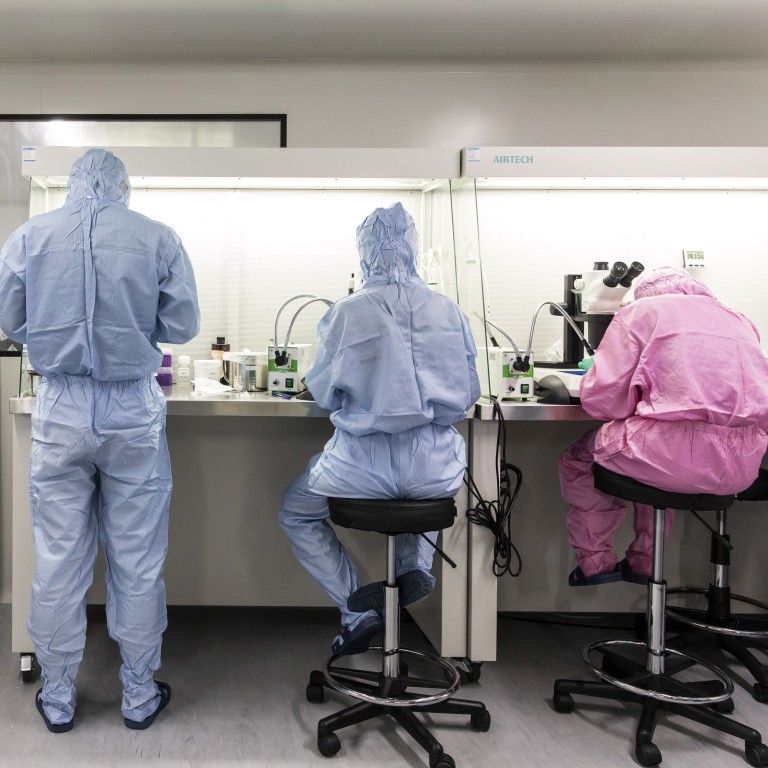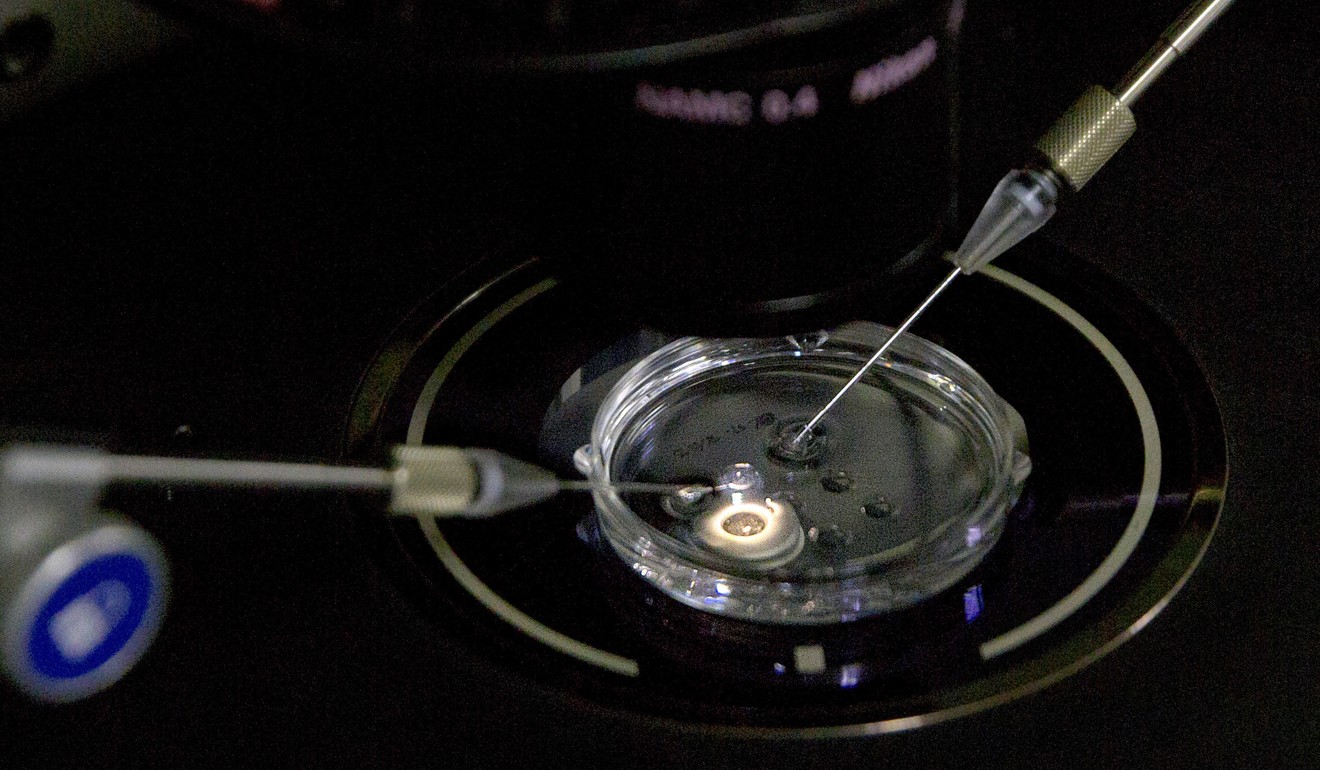
China’s scientists aren’t shy about promoting their work any more
- Years of language barriers and a culture of modesty are left behind as country’s scientists are inspired by ‘wolf spirit’
- While most review articles are produced by Western nations, one study of citations in 2018 suggests China is leading the way
Miriding Mutailipu is a crystal scientist from Xinjiang Uygur autonomous region. Raised in Lop county, one of the poorest neighbourhoods in Hotan prefecture, he grew up in a part of China known for thousands of years as a source of precious stones.
As an undergraduate chemistry student, Mutailipu worked at a supermarket to help support his family while he created crystals in a laboratory, state media said.
On December 10, Mutailipu and his mentor Professor Pan Shilie – a lead scientist in China’s laser research programme – jointly published a review article in the German chemistry journal Angewandte Chemie about the development of crystals that would take the precision and energy of laser beams to unprecedented levels. They also proposed directions for further research into the technology, which could eventually be used in computer processor production and may also have military applications.

Review articles, which summarise existing research and cast light on ideas that are most likely to create scientific breakthroughs, are usually written by scientists widely recognised as leaders in their field. But language barriers, a traditional culture that held modesty as a virtue, and a backwardness in research meant generations of Chinese academics rarely contributed reviews to the global research community.
The website of the Chinese Academy of Sciences (CAS), the world’s largest research organisation, said that in 2009 its researchers published one review article – on the impact of global warming on the ecology of the Tibetan Plateau.
But all that has changed in recent years, and Mutailipu is one of an increasing number of Chinese researchers who have taken up the challenge to publish reviews, awakening what one academic called the “wolf spirit” in the country’s scientists.
US loses top spot to China in chemistry papers amid Washington’s increased scrutiny of foreign ties in basic research
Driven by rapidly increasing investment on scientific research and the demands of industry and the military for cutting-edge technology, China has made breakthroughs in fields such as material sciences, gene editing, quantum communication, hypersonic flight, supercomputers, artificial intelligence and nuclear physics.
These have given Chinese scientists a bigger presence on the international stage, and while the total number of review papers was unclear, CAS alone contributed more than 50 articles to journals in 2019.
Professor Fang Hongliang, a researcher with CAS’s Institute of Geographic Sciences and Natural Resources Research in Beijing, said: “We are no longer shy of speaking out, of competition, of promoting our research.
“Recent exchanges with Western countries have awakened the wild ‘wolf spirit’ in Chinese scientists.”
In April, Fang co-published a review of global leaf studies, where an estimate of plant cover played a critical part in climate change research. In the paper, he and colleagues analysed the pros and cons of emerging techniques and technology such as drone mapping to create plant cover models and pointed out problems with the methods. It was a time-consuming effort.
“The gathering of information started more than two decades ago,” Fang said, while the writing took three or four years, and the publication process lasted more than a year.
“A review takes more time than a normal research paper,” he said. “I don’t think I can do more than three in my entire academic career.”
Fang said the idea that Chinese scientists were not good at writing review papers was just a myth. “This is far from the truth,” he said.
Second-place China to overtake the US in global AI race in five to 10 years on current growth, report says
China’s intellectual tradition gave great weight to systematic thinking, Fang said. Traditional medicine, for instance, treated the body as a whole when it came to the diagnosis and treatment of a disease. There was the belief that change in one organ affected the rest of the body.
“This tradition can be to our advantage,” he said. “When writing a review, a new idea may pop up and lead to innovation.”
Language remained a challenge, and while China’s scientists were able to write clearly in English thanks to training in Western countries throughout their careers, some felt they could best explain their ideas in Chinese.
Unlike writing a research paper, a review article needed the big picture and concise language to explain concepts. It had to be accurate without damping the imagination, which for some scientists was only natural in their mother tongue.
Professor Li Jinsong, a biologist and authority on artificial sperm and stem cell technology at CAS’s Shanghai Institutes for Biological Sciences, said: “I hope that in the future we can write more reviews in Chinese.
“If a paper contains high-value information, scientists around the world will read it no matter what language it uses. Anyone can use an machine translator nowadays.”

Today, most review papers are still written by scientists from the West, in particular the United States. According to a 2014 study, of the 1,857 review articles cited more than 1,000 times by the year 2011, more than 1,200 were from the US, while eight came from China.
Professor Yuh-shan Ho, a co-author of the study with the Asia University, Taiwan, saidthat the results from more recent years were not available, but that the 2014 figures were not all the picture.
“China has the most publications in 2018 in Sci-Expanded [the international citation index],” he said. “That means China ranked No 1 in 2018. The US would not be top any more.”
China overtakes Britain in number of highly cited researchers but still lags far behind US
Pan, who published 45 papers on new crystal materials this year, and Mutailipu, could not be reached for comment on their research. A colleague said they were “extremely busy” working towards the commercialisation and mass production of crystal growing technology and that new research facilities and factories were being built in western China.
“The plan is to turn Xinjiang into a world-leading centre for crystal research, development and production,” the colleague, who asked not to be named because of the sensitivity of the work, said.


